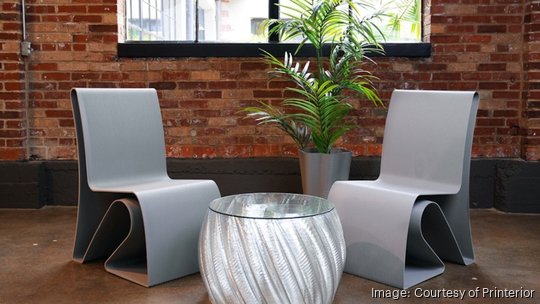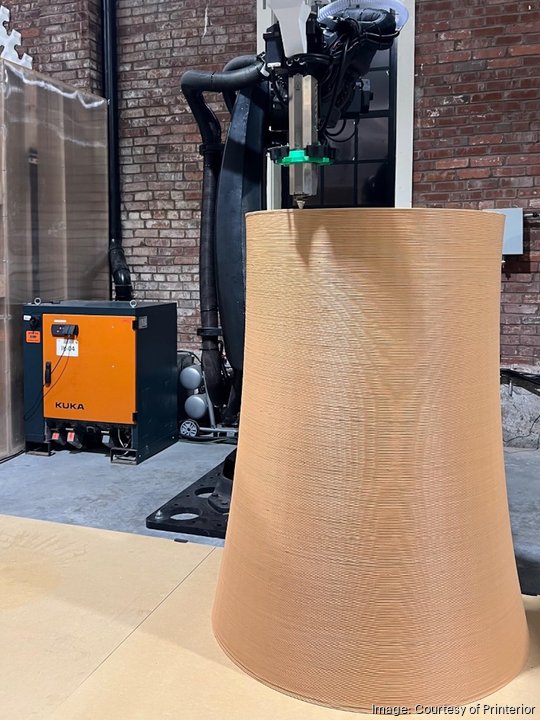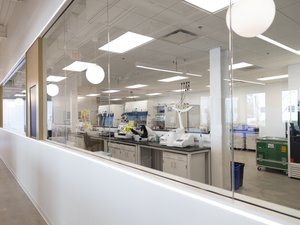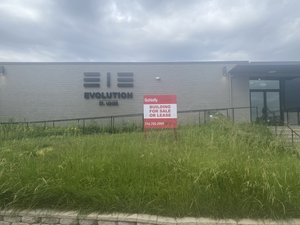Printerior, a 3D printing company based in St. Louis, is expanding its operations and will soon grow its physical footprint.
The company — which got its start manufacturing 3D printing materials made from recycled plastics — has now launched large-format 3D printing services. It's partnering with interior designers and architecture firms to produce one-of-a-kind pieces and projects, such as furniture, columns and curved walls, said co-founder Trent Esser.

And with the new offering comes the need for more space. The company, currently located at 5145 Delmar Blvd. in the Delmar Maker District, is in the process of finalizing a lease for a “much larger” office space and manufacturing facility that it hopes to move into in July, Esser said. He declined to share any details of the new space, such as its address or square footage, ahead of signing the lease.
“Our focus is on opening up the ability for designers and architects to have creativity, along with being able to use sustainable materials,” he said.
Esser founded Printerior in 2020 with his friend and business partner, Hayden Seidel, while they were both students at the University of Missouri-Columbia. The pair originally envisioned the company as a large-format 3D printing business that utilized sustainable materials, but they were forced to pivot after the Covid-19 pandemic hit and negatively affected the market, he said.
As a result, the company instead spent its first year or so solely focused on manufacturing filaments, or the thermoplastic wires extruded through a 3D printer and built up to form the final product, Esser said. However, Printerior's filaments are made from recycled plastics, whereas about 90% of filaments most commonly used in 3D printing are made from petroleum-based plastics that require virgin raw materials, or materials extracted directly from nature, he said.
“At the end of the day, you’re using resources to develop a brand-new (filament) that doesn’t really need to be virgin for any specific reason,” Esser said. “We developed those exact same (filaments) but in a recycled form, and so that way we can have a one-to-one substitute for what is currently on the market and what is currently highly used by consumers.”
Printerior’s filament business — along with grants, including a $50,000 Arch Grant in 2021 and a $67,400 grant from the state's Environmental Improvement and Energy Resources Authority (EIERA) in 2023 — helped fund its expansion, allowing the company to launch its 3D print service business, Esser said. He declined to comment on the total amount of capital the company has raised through grants and its annual revenue.
The company began with small-scale industrial projects, such as producing casings for manufacturing companies or prototyping new products for startups, Esser said.

But the size and scope of Printerior’s projects quickly grew once it launched what it calls its robotic large-format additive manufacturing printing technology — a proprietary 3D printer developed to utilize a six-axis robot, like those commonly used in car manufacturing plants, to print “massive” projects, such as furniture, columns and curved walls, Esser said.
Printerior developed the machine with its own R&D budget, and the company used its EIERA grant to help fund the remainder of the components needed to complete the final production-version machine. "One of the largest expenses in that grant was a new KUKA robotic arm, and the additional funders were for the fabrication of our proprietary extruder and the additional components that allow us to make a robotic arm into a large format printer," Esser said.
The company in its EIERA grant submission said it need to buy equipment totaling about $115,000, according to state documents.
“There’s stuff that you can do with printing that you literally would never see in any other form of production,” Esser said, adding that this form of 3D printing is also cost effective and fast.
3D printing costs usually run the per-pound price of filament, which is typically between $20 and $30 per kilogram, plus some machine run-time cost. A custom-made chair, for example, can be 3D printed for “a couple hundred dollars,” whereas “trying to produce a one-off for a prototype in an industrial setting would cost you tens of thousands of dollars,” Esser said.
And a standard 3D printer can print, on average, between 1 kilogram and 2 kilograms of filament per day, while Printerior’s large-format 3D printer can print 5 kilograms per hour.
“We’re really expediting how much material we can actually lay down and how quick we can print something,” Esser said.











